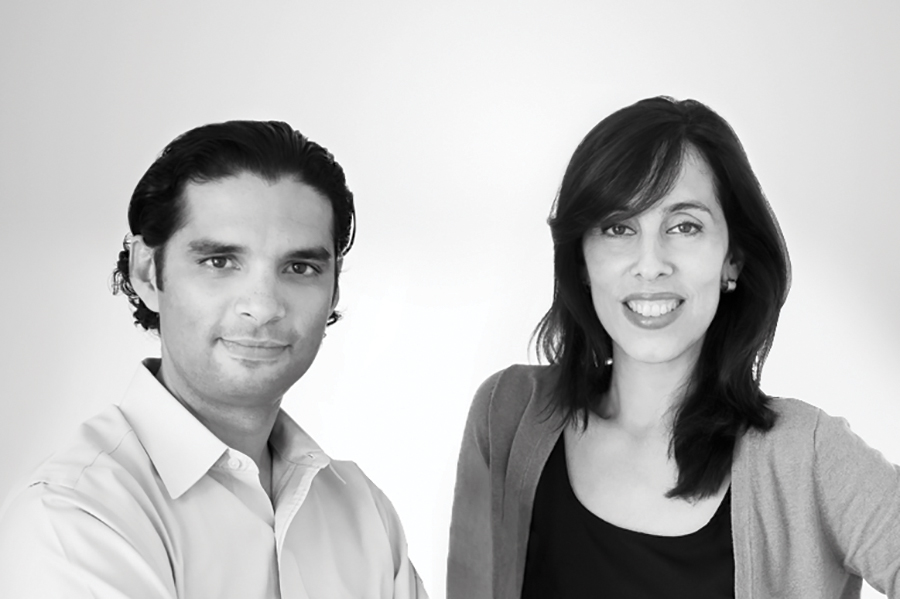Firm name: Cúre & Penabad
Location: Miami
Year founded: 2001
Firm leadership: Adib Cúre, Carie Penabad, Assoc. AIA,
Education: Cúre: B.Arch., University of Miami (U Miami); M.Arch., Harvard Graduate School of Design (GSD); Penabad: B.Arch., U Miami; M.Arch., Harvard GSD
Experience: Prior to establishing our own firm, we worked at Machado Silvetti in Boston. Adib is a professor of practice at U Miami, and Carie is an associate dean of the School of Architecture.
How founders met: Rome Program, U Miami School of Architecture
Firm size: 8
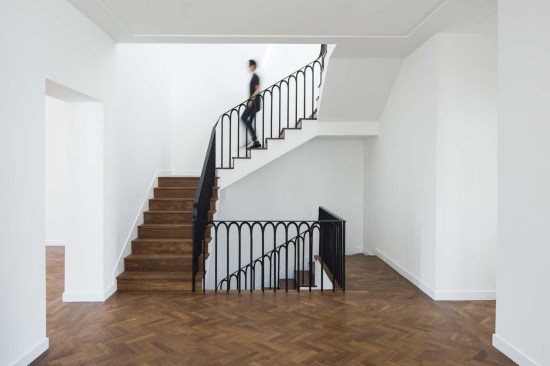
Carlos Domenech
A large central stairwell leads to multiple levels of rooms featuring loggias to view the expansive Guatemalan landscape surrounding this 6,000-square-foot residence in Guatemala City.
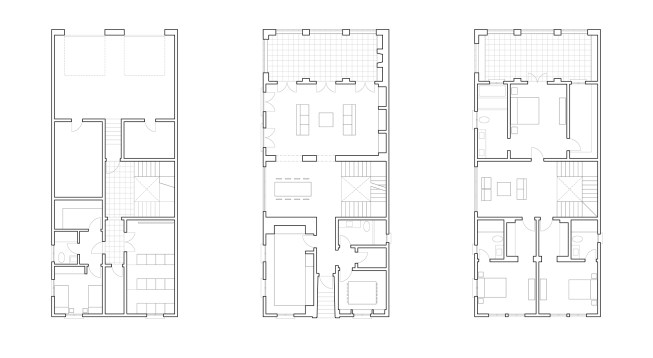
courtesy Cúre & Penabad
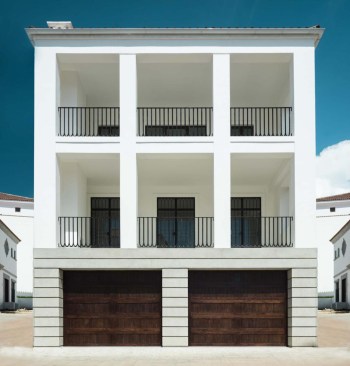
Carlos Domenech
Mission:
We aspire to create an architecture of place, with projects that are created using building techniques that are both culturally relevant and performative. We try to capitalize on the intelligence sedimented in evolving building morphologies to tackle the challenges of the environment with the ultimate goal of creating new, sustainable buildings and places of identity and wholeness.
First commission:
Oak Plaza in Miami’s Design District
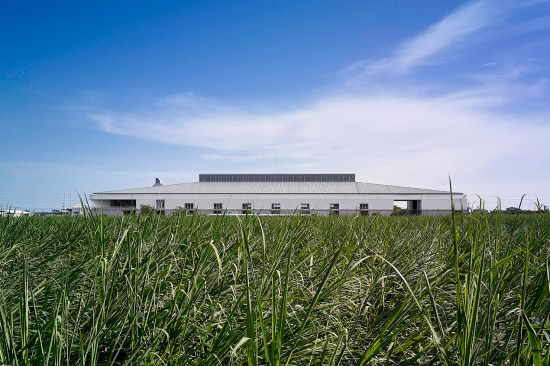
Carlos Domenech
Inspired by vernacular and industrial typologies, the duo designed the corporate headquarters for the sugar mill company Magdalena Tierra Dulce as a single structure, with a large open room that accommodates all employees of the facility in Guatemala to promote collaboration and break down the barriers of corporate hierarchy.
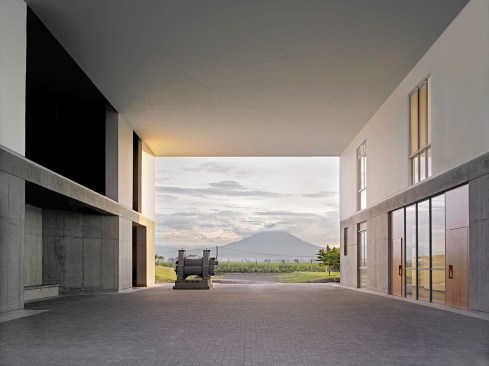
Carlos Domenech
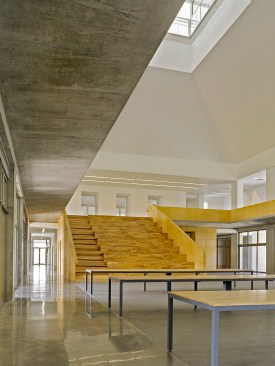
Carlos Domenech

courtesy Cúre & Penabad
Favorite project:
The Magdalena Tierra Dulce corporate headquarters called for the design of an administrative center for a sugar mill business in southern Guatemala. We were inspired by the surrounding landscape and the ways in which the building could respond to the natural and cultural contexts. Our client challenged us to think about how design could facilitate change in the culture of a company, thus highlighting architecture’s ability to transform people’s lives.
The project was undoubtedly our most challenging to date and allowed us to grow as designers and individuals.

Carlos Domenech
For Escuelita Buganvilia, the firm opted to contrast the local vernacular of the rural Guatemalan surroundings by using concrete and steel rather than traditional stone and wood for its construction. Completed in 2015, the 3,200-square-foot structure features five classrooms, a metal gable roof with generous eaves to protect students from inclement weather, and outdoor concrete seating that offers an informal meeting area.
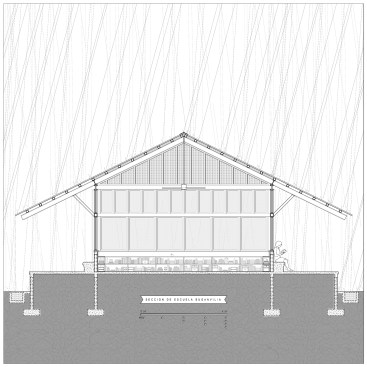
courtesy Cúre & Penabad
Second favorite project:
The Escuelita Buganvilia is a classroom building prototype in southern Guatemala. The school serves a growing rural community that, up until recently, had limited access to formal education. The project provoked us to consider what is fundamental in architecture and highlights our belief that good design should serve all sectors of society.
Origin of firm name:
Easy—last names of the founding partners
Architecture hero:
It is difficult for us to point to a single individual as there are many who have influenced and shaped the way we see and think about architecture. If we had to highlight a few they would include: Gunnar Asplund, Andrea Palladio, Ferdinand Pouillon, Aldo Rossi, Louis Kahn, Dimitris Pikionis, Adolf Loos, Josep Antoni Coderch, Dom Hans van der Laan, Sigurd Lewerentz, Gio Ponti, Lina Bo Bardi, Robert Venturi, FAIA, and Denise Scott Brown, Hon. FAIA , and Kazuo Shinohara.
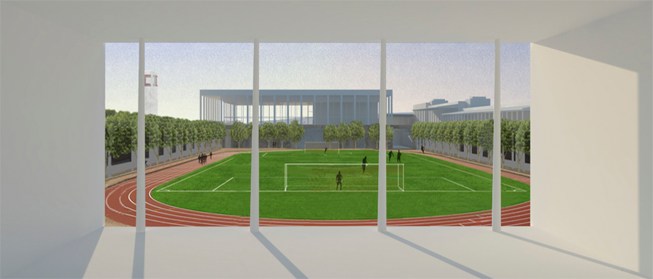
courtesy Cúre & Penabad
The firm both prioritized the utilitarian needs of a school campus and embraced the institution’s natural surroundings for its Colegio Interamericano expansion project in Guatemala City, Guatemala.
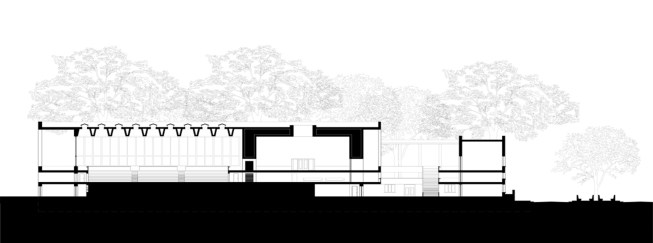
courtesy Cúre & Penabad
Modern-day architecture hero:
The countless anonymous builders of vernacular settlements throughout the world. The architectural and urban forms of these sites are the result of fundamental responses to local culture and climate. As such, these builders carry with them the timeless lessons of how to build cities.
Special item in your studio space:
Japanese brush to wipe down the desk after drawing
Design tool of choice:
HB pencil and yellow trace paper—we still believe in drawing.
Memorable learning experience:
Vincent Scully’s lectures at U Miami were influential during our formative years. He spoke passionately of the work of the great modern masters—among them Louis Kahn and Robert Venturi, FAIA, the latter preferring the “black and white” to the “black or white.” This all-inclusive sensibility continues to inspire our open-minded attitude toward the study and development of architecture and the making of buildings and cities.
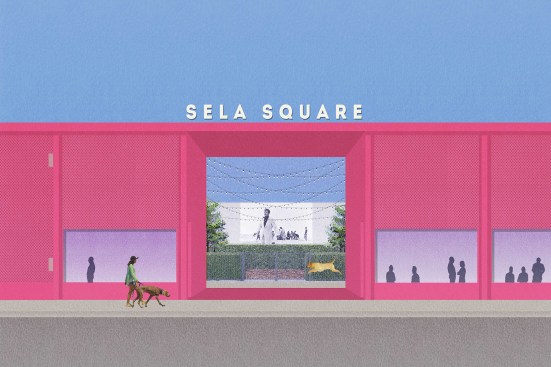
courtesy Cúre & Penabad
In this dog park proposal for the Little River neighborhood north of Miami’s Design District, a pink metal structure mimics the traditional dogtrot house, with a large, covered entry that leads into an expansive interior space. Amenities, including a café, bathrooms, seating, and landscaping, surround the central interior park.
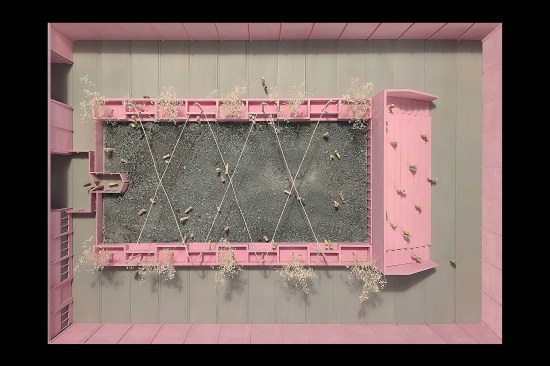
courtesy Cúre & Penabad
When we’re not working in architecture, we are:
Traveling with friends and family.
What the best advice you have ever gotten?
Think big and make no excuses.
Biggest challenge in running a successful practice:
Purging ourselves of the common belief that designers are not good business people. This is simply not true. If you lack a certain skill, acquire it.
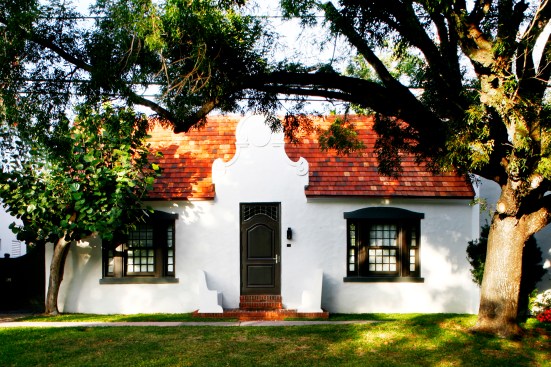
Ariela Grossman
Cúre & Penabad restored a historic 1920s house in Cape Dutch Village in Coral Gables, Fla., that was originally built to evoke Dutch farmhouses in Cape Town, South Africa.
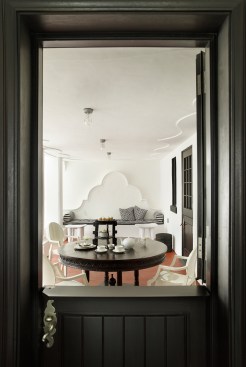
Daniel Portnoy
Skills to master:
The art of delegation
Morning person or night owl?
We are both larks and like to rise with the sun.
Social media platform of choice:
Instagram

